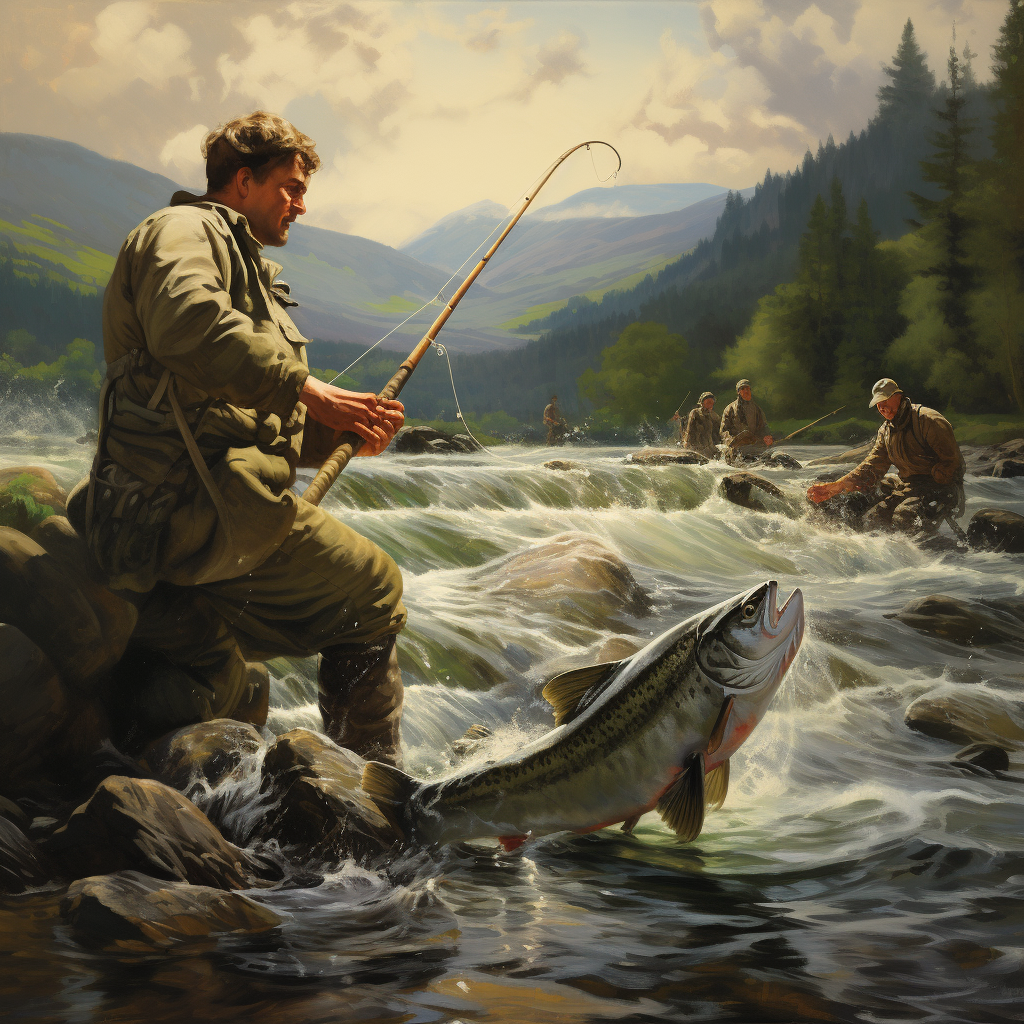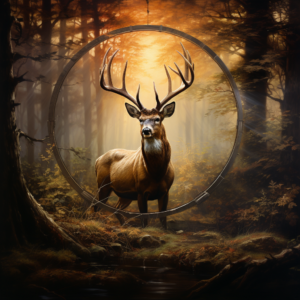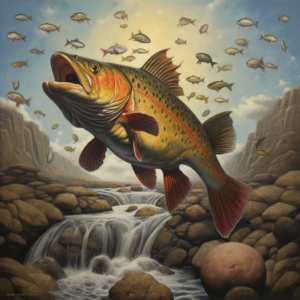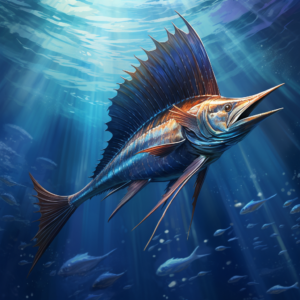Are you ready to take on the challenge of catching the magnificent King of Fish? Salmon fishing can be a thrilling and rewarding experience, but it requires knowledge, skill, and the right fishing techniques and equipment. In this comprehensive guide, we will take you through everything you need to know about salmon fishing, including the best techniques and tips to improve your chances of success.
Whether you’re an experienced angler or a beginner, this guide will provide you with valuable insights into the world of salmon fishing. Learn about the different species of salmon, their behavior, and preferred habitats. Discover the essential fishing gear and supplies needed for a successful salmon fishing expedition.
We’ll also cover the best rods, reels, and lines for salmon fishing, as well as the different types of fishing tackle to use for specific situations. With this knowledge, you’ll be able to effectively target salmon and increase your chances of landing the catch of the season.
Explore various salmon fishing techniques, such as casting, trolling, and fly fishing. We’ll provide you with expert tips and tricks to improve your casting accuracy, teach you how to use effective fishing knots, and share insider secrets for successful salmon fishing.
Lastly, we’ll guide you towards becoming a skilled salmon angler by sharing advanced strategies and tips to increase your chances of success. From understanding seasonal patterns and water conditions to choosing the right bait and lures, you’ll be well-equipped to embark on your salmon fishing adventures confidently.
So, grab your fishing gear and supplies, and get ready to experience the thrill of salmon fishing. Whether you’re fishing for sport or for a delicious meal, this guide has everything you need to become a master angler. Let’s dive into the exciting world of salmon fishing together!
Understanding Salmon: Species, Behavior, and Habitat
Before you grab your fishing gear and head to the nearest river, it’s important to understand the basics of salmon species, their behavior, and their preferred habitats. This knowledge will help you plan your fishing expedition and increase your chances of success.
The Different Species of Salmon
There are five main species of salmon that you can catch in North America: Chinook, Coho, Sockeye, Pink, and Chum. Each species has its own unique characteristics, including size, color, and preferred habitat.
Chinook salmon, also known as King salmon, is the largest and most prized species. They can grow up to 50 pounds and are typically found in deeper, slower-moving waters.
Coho salmon, also known as Silver salmon, are smaller than Chinook but still a popular catch. They are known for their acrobatic jumps and can be found in both freshwater and saltwater environments.
Sockeye salmon, also known as Red salmon, are highly valued for their deep red meat and are often caught in the open ocean. They prefer colder water temperatures and can be found in both freshwater and saltwater environments.
Pink salmon, also known as Humpy salmon, are the smallest and most abundant species. They are typically found in shallow waters and are known for their distinct hump on their back.
Chum salmon, also known as Dog salmon, are the least desirable species for eating but still a popular catch for sport fishing. They are found in brackish and freshwater environments and are known for their strength and endurance.
Salmon Behavior and Habitat
Salmon are anadromous fish, which means they are born in freshwater environments, migrate to the ocean, and then return to freshwater to spawn. Understanding their life cycle and behavior is crucial to successful salmon fishing.
When salmon return to their freshwater spawning grounds, they are typically in a feeding frenzy and will strike at almost anything that resembles food. This is the best time to catch them. During the rest of the year, they can be more finicky and require more skill and patience to catch.
Salmon prefer freshwater environments with a strong current and plenty of hiding places, such as rocks and fallen trees. They also require specific water temperatures and oxygen levels to survive. Be sure to research the local water conditions and plan your fishing trip accordingly.
Fishing Gear and Supplies
To catch salmon, you’ll need specialized fishing gear and supplies. Depending on your fishing technique and the location you’ll be fishing in, you may need a fishing rod, reel, line, bait, lures, and other accessories.
When selecting your fishing gear, make sure it is appropriate for the size and species of salmon you are targeting. Also, be sure to stock up on enough bait and lures, as salmon can be particularly aggressive during their spawning runs.
With this knowledge of salmon species, behavior, and habitat, as well as the necessary fishing gear and supplies, you’re ready to embark on your salmon fishing expedition.
Choosing the Right Fishing Equipment: Rods, Reels, and Lines
When it comes to salmon fishing, having the right equipment can make all the difference. The right fishing rods, reels, and lines can mean the difference between a catch of a lifetime and coming home empty-handed.
Investing in a high-quality fishing reel is essential for salmon fishing. Look for a reel that can handle the weight of a large fish, with a strong drag system to help fight against the fish. A spinning reel is a popular choice among anglers, but a baitcasting reel may also be suitable, depending on your preference and experience.
When it comes to fishing lines, consider using braided lines, which are strong and durable. Braided lines also have a low visibility in the water, making them less likely to scare away fish. Fluorocarbon lines are another option, which have a higher invisibility factor and are more resistant to abrasions than other lines.
Choosing the right fishing rod is also crucial for salmon fishing. Look for a rod with a medium-heavy action and a length of at least 8 to 9 feet. A longer rod will give you more casting distance and better leverage when fighting a fish. Don’t forget to consider the type of fishing tackle you’ll be using, as well.
Overall, investing in quality fishing equipment is essential for successful salmon fishing. With the right rods, reels, lines, and tackle, you’ll be well-equipped to land the King of Fish.
Mastering Salmon Fishing Techniques: Casting, Trolling, and Fly Fishing
If you want to catch a salmon, it’s essential to master the right fishing techniques. You need to know when and where to cast, how to troll effectively, and how to fly fish like a pro. Here are some fishing tips and techniques to help you catch that elusive big one.
Casting
Casting involves throwing your bait or lure into the water using a rod and reel. To improve your casting accuracy, try practicing your technique on land before you hit the water. Make sure you use the right weight bait or lure, as well as the right size hook for the size of the fish you’re targeting.
When casting, aim for drop-offs, riffles, and eddies, where the water is moving in different directions. This is where salmon often feed. When you feel a bite, be patient and wait for the fish to start swimming away before you start reeling in. This will ensure the hook is set firmly.
Trolling
Trolling is a technique used to cover a large area of water when fishing for salmon. It involves slowly moving your boat through the water while dragging a lure or bait behind you.
When trolling, it’s important to vary the speed and depth of your bait. This will help you find the best location for the fish you’re targeting. Use a downrigger or lead core line to get your bait to the right depth.
When you feel a bite, wait a few seconds before reeling in. This will give the fish time to swallow the bait and will increase your chances of hooking the fish.
Fly Fishing
Fly fishing is a popular technique used to catch salmon in freshwater streams and rivers. It involves using an artificial fly as bait rather than live bait.
When fly fishing for salmon, you’ll need a fly rod, a reel, and a selection of flies. Choose a fly that matches the size and color of the insects found in the water where you’re fishing.
When casting, try to present your fly as naturally as possible. This means casting upstream and allowing the current to carry the fly downstream.
Fishing Knots
Fishing knots are essential for successful salmon fishing. They help you tie your bait or lure to your line securely. The most common knots used in salmon fishing include the Palomar knot, the improved clinch knot, and the uni knot.
Practice tying these knots before you head out on the water to ensure you can tie them quickly and easily.
By mastering these salmon fishing techniques, including casting, trolling, and fly fishing, and knowing how to tie effective fishing knots, you’ll be well on your way to becoming a skilled salmon angler.
Proven Strategies and Tips for Landing the King of Fish
Catching a salmon requires more than just luck. With the right strategies and tips, you can increase your chances of success and bring home the catch of the day. Here are some expert tips to help you improve your salmon fishing game:
Understand Seasonal Patterns
Salmon behavior is influenced by seasonal changes in water temperature, light, and food availability. Depending on the time of year and location, salmon may be more active during certain times of the day or in particular areas of the water. Understanding these patterns can help you choose the best time and place to fish.
Choose the Right Bait and Lures
The key to enticing a salmon to bite is to use bait and lures that mimic their natural prey. Depending on the species and habitat, salmon may be attracted to flies, spinners, spoons, or baitfish. Experiment with different types to see what works best in your fishing location.
Master Your Casting Technique
Accurate casting is essential for effective salmon fishing. Practice your casting technique to ensure you can reach the desired area of the water and control the speed and depth of your bait or lure. Be patient and persistent, and don’t be afraid to adjust your technique based on the conditions of the water and weather.
Pay Attention to Water Conditions
The clarity, temperature, and current of the water can all impact salmon behavior and fishing success. Pay attention to these factors, and adjust your fishing technique accordingly. For example, in murky water, use brighter colors or larger lures to increase visibility.
Use High-Quality Fishing Equipment and Supplies
Investing in high-quality fishing equipment and supplies can make a big difference in your salmon fishing success. Choose a rod and reel that can handle the size and strength of the fish, and use strong, durable fishing line. Don’t forget to bring essential supplies like hooks, sinkers, and pliers.
By following these proven strategies and tips, you’ll be well on your way to landing the King of Fish. Remember to be patient, persistent, and have fun! Happy salmon fishing!
Conclusion
Congratulations! You have now completed our comprehensive guide to salmon fishing. With all the knowledge you have gained, you’ll be well on your way to becoming a successful salmon angler. Remember, having the right fishing gear and supplies is crucial to your success, so be sure to invest in high-quality equipment that meets your needs.
Whether you’re a seasoned angler or a beginner, there is always more to learn and discover about salmon fishing. Don’t be afraid to experiment with different fishing techniques and explore new fishing spots.
So, get out there and enjoy the thrill of salmon fishing! We hope our guide has been helpful in your journey towards catching the King of Fish.
FAQ
Q: What are the best fishing techniques for salmon?
A: Some of the most effective fishing techniques for salmon include casting, trolling, and fly fishing. Each technique has its own advantages and can be used in different situations.
Q: What kind of fishing equipment do I need for salmon fishing?
A: To effectively target salmon, it’s important to have the right fishing equipment. This includes a suitable fishing rod, reel, and fishing line. Additionally, you may need to consider using specific fishing tackle for different salmon fishing situations.
Q: What are some tips for improving casting accuracy?
A: To improve your casting accuracy, it’s important to practice proper casting techniques. Focus on your casting form, use the right amount of power, and pay attention to your line control. Additionally, choosing the right fishing knot can also enhance your casting distance and accuracy.
Q: How can I increase my chances of landing a salmon?
A: There are several strategies and tips to increase your chances of landing a salmon. Understanding seasonal patterns and water conditions can help you locate where the salmon are likely to be. Choosing the right bait or lures, as well as using proper fishing techniques, can also improve your odds of success.
Q: What do I need to know about the different species of salmon?
A: Before going salmon fishing, it’s helpful to understand the different species of salmon, their behavior, and preferred habitats. This knowledge can help you tailor your fishing approach and increase your chances of catching the specific species you are targeting.




